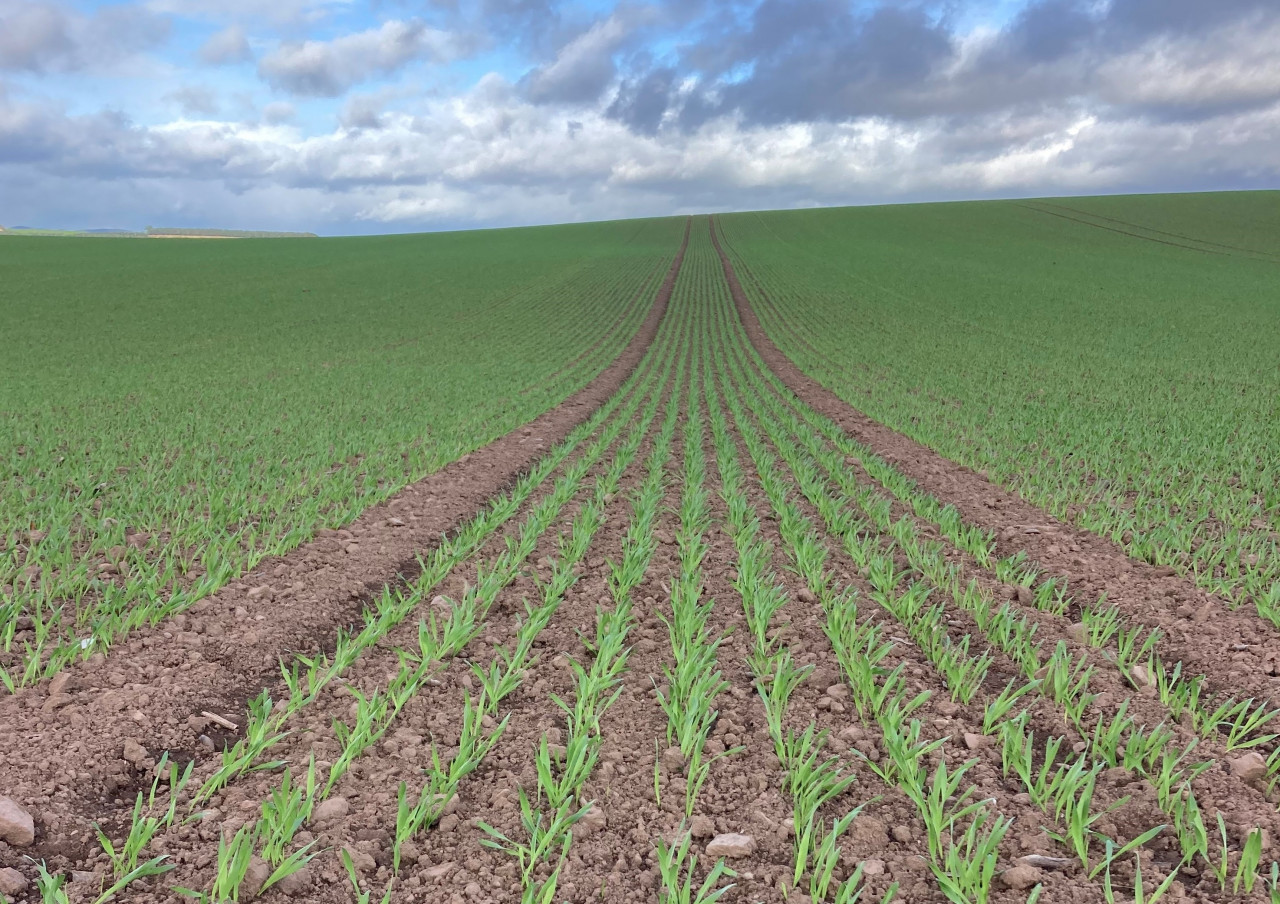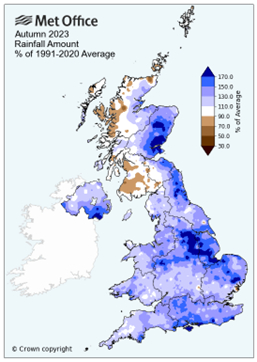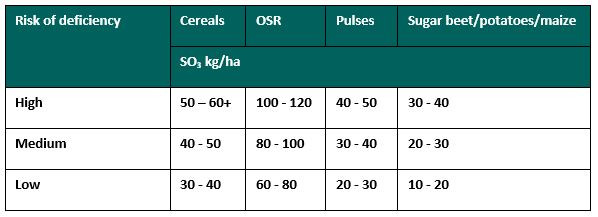Early nutrition strategies for winter cereals: challenges and solutions
The recent wet and mild conditions have brought early crop nutrition into sharp focus and you may be looking to address some of the negative impacts on any autumn-drilled cereal crops.
During autumn 2023, most of the UK experienced significantly above average rainfall and this depleted soils of any residual nitrogen. There's also no doubt that rooting was compromised due to waterlogging.
This blog is a combination of insights and guidance for crop nutrition, variable rate technology and biostimulants – all of which can play an important role in your spring strategy to boost biomass and maximise profit margins. If you follow some of the below guidance, any lacklustre crops should stand the best chance of turning things around in time.
Make sure crops can access vital nutrients
With levels of residual nitrogen vastly reduced following excess winter rainfall, it's worth remembering that sulphur behaves in much the same way so has also likely leached out of the soil profile too. Potassium is likely to have also been impacted, although not as mobile as nitrogen and sulphur, it's possible that it could have moved beneath the rooting zone.
If you applied organic manures in the autumn, your assumed available nitrogen and sulphur could be significantly less. Tools like Manner NPK can help you get a better estimate of the available nutrients following a manure application. In an example using this tool (with accurate over winter rainfall, soil type etc.), it highlighted the increased nitrate leaching meant the spring available nitrogen had reduced by 30%.
With these vital nutrients lacking, winter planted crops will be struggling to find sufficient amounts to aid growth. The following activities could therefore be worthwhile:
- Making early nitrogen applications (keep in mind ground conditions and weather patterns)
- Applying nutrients little and often to support poorly rooted crops
- Thinking about total nitrogen rate as you look at marketing crop 2024, as well as its relationship with the breakeven ratio.
In Frontier trials, crops have demonstrated a yield increase from PK application in the spring which mirrors that of PK application in the autumn. With this in mind, you might want to consider fresh PK applications in addition to your fertiliser programme – especially to support root growth during March.
In terms of sulphur and the high chance some of it may have been lost from the rooting zone, it's likely that most farms are now in the medium to high risk of deficiency (see table below).
Measure to manage with variable rate nitrogen
To further optimise nutrition and improve the performance of any 'patchy' crops is by managing variable biomasses. This can be done using SOYL's variable rate nitrogen (VRN) service.
With VRN, every dose of nitrogen can be precisely matched to crop demand. This will allow you to even up in-field crop variation, optimise yield potential and reduce nitrogen excess in the soil as well as the risk of it leaching. The technology helps to increase nitrogen use efficiency, which reduces carbon emissions and environmental exposure while contributing to an average yield increase of 3-4%.
More information about the positive impacts of VRN can be found in an upcoming blog, which will also cover our recent trial results and how the benefits seen over a number of seasons can translate on your own farm. Subscribe to our blog to be notified of any future blog posts.
Give crops a boost with biostimulants
The final tip to help overcome poor or shallow rooting is to incorporate biostimulants, which promote root growth and help to build plant resilience if the weather turns dry.
This season plants have not been subject to dry conditions since drilling, so they haven't had to go looking for moisture. This has led to shallow root depths and low root biomass, which increase the lodging risk and reduce the capacity of the plant to endure a potential prolonged dry spell during the spring.
It's possible to promote rooting development using phosphite and Status (a novel new pure plant biostimulant made up of MTU® + pidolic acid). However, there is a narrow window to improve and influence root depth before stem extension (GS31).
Gro-Plan P is a high strength potassium phosphite-based biostimulant that increases the level of the cytokinin cis-zeatin (cZ) which increases primary and lateral root growth. Phosphite also enhances the activity of nitrate reductase, a key enzyme in the nitrogen assimilation process. Phosphite application in controlled conditions usually results in a 30% increase in root biomass, allowing improved access to soil nutrients and moisture.
As mentioned, Status contains MTU® which has a unique mode of action that increases the chlorophyll content in the photosystem. Therefore, it boosts photosynthetic efficiency, increasing the production of energy and sugar which leads to faster growth of roots and shoots.
Don't forget the importance of micronutrition and trace elements to help speed up crop recovery and boost biomass too. Manganese (Mn), copper (Cu) and zinc (Zn) all contribute to protein synthesis in the plant, required for tiller production and maximising photosynthesis for the maintenance of healthy green leaves. The table below outlines the main benefits of these chemical compounds.
| Micronutrient | Benefit/uses in plants |
| Manganese (Mn) | Involved in photosynthesis (PSII), SOD superoxide detox and nitrate reduction pathways in the plant, protein synthesis. |
| Copper (Cu) | Involved in photosynthesis, required for the manufacture of lignin. |
| Zinc (Zn) | Important in the synthesis of proteins and nucleic acid, used in the metabolism of carbohydrates and the Auxin. |
Cearum is a foliar nutrient containing Mn, Zn and Cu, plus the R100® biostimulant which significantly increases the uptake of these three compounds when applied to winter cereals. The combination of sulphate and nitrate forms of manganese gives both fast uptake and persistence. R100® will also increase the amount of cytokinins in plant tissue, which stimulate cell division and plant growth.
Summary
While it's been a very challenging start to the season so far, a considered nutrition strategy could make all the difference this spring. By adopting some of the solutions above, the hope is that crop biomass can recover and greater crop uniformity can be achieved, ready for the focus to then switch to pushing for yield and quality.
Keep an eye out for future blogs which will focus on later nitrogen strategies based on yield potential and end markets. Given the increase in spring cropping area for 2024, we will also be advising on spring cereal nutrition and biostimulants. Remember, you can subscribe to our blog to be notified of upcoming posts.
If you'd like help with any aspect of your early nutrition plan, please get in touch with your local Frontier representative. Alternatively, you can reach out to our nutrition team here.
As a subscriber, you’ll receive email alerts each time a new blog is published so you can always stay updated with the latest advice and insights from our experts










Comments